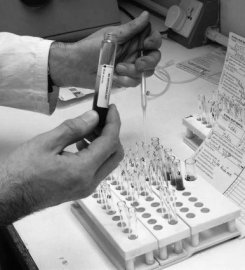 HIV-infected patients in whom the disease never manifests itself, known as long-term non-progressors, are the focus for researchers who are trying to establish how their bodies accomplish the feat. Now, science is shedding some light on how non-progressor immune systems function, and the researchers involved are hopeful that their findings could lead to a new class of HIV/AIDS treatments.
HIV-infected patients in whom the disease never manifests itself, known as long-term non-progressors, are the focus for researchers who are trying to establish how their bodies accomplish the feat. Now, science is shedding some light on how non-progressor immune systems function, and the researchers involved are hopeful that their findings could lead to a new class of HIV/AIDS treatments. The researchers, from the University of Rochester Medical Center (UR), have confirmed that non-progressors maintain higher than normal levels of an enzyme called APOBEC-3G (A3G) in their white blood cells. They believe that A3G works by mutating or "editing" the HIV genetic code so that the virus can no longer reproduce.
In something of a viral arms-race however, HIV has evolved to counter A3G with its own defense protein, which tricks the white blood cell into destroying A3G.
The results of the current study, published in The Journal of Biological Chemistry, suggest how A3G performs its role in the immune system, and what parts of it may need to be protected so that it can continue to protect the body.
"Keeping A3G in action represents a new way to attack HIV," said UR researcher Joseph E. Wedekind. "This first, rough glimpse of A3G's physical structure gives us a map to follow in the search for a new class of AIDS treatments."
The new study paints a fascinating picture of how A3G works. Within infected human cells, viral DNA chains must temporarily unzip their two attached chains into single strands to be read and copied, and they must be copied if the virus is to infect more cells. Past research had established that A3G edits single strands of HIV DNA exposed while the virus copies itself. The newly determined structure of A3G suggests how it is able to crawl down HIV DNA chains, introducing mistakes wherever the chains are unzipped and skipping over zipped-up, double stranded regions. Researchers now believe A3G is capable of this because its structure is surprisingly different from other enzymes in its class.
Interestingly, the researchers also established that A3G has two forms; one that actively disrupts viral reproduction by editing as a free protein, and another in which the enzyme is inactive due to the presence of messenger RNAs. The new results show what both forms look like, and suggest new ways in which HIV or the cell itself may turn off A3G. The researchers believe that HIV infection disrupts the normal process of making proteins, creating a surplus of free messenger RNAs that force A3G to become inactive. Messenger RNAs - copies of DNA that serve as a templates for the building of proteins - may be natural regulators of whether A3G remains active or not. Preventing this mRNA interaction with A3G may represent yet another new avenue of attack on HIV.
"We are the first group to be able to say here are the parts of the molecule that need to be protected to keep A3G active in its age-old, ongoing war against viruses," said study leader, Harold C. Smith. "We believe this work will lead to the development of new treatments that enable patients to better harness their own natural defense mechanisms."
Based on material from the University of Rochester Medical Center





